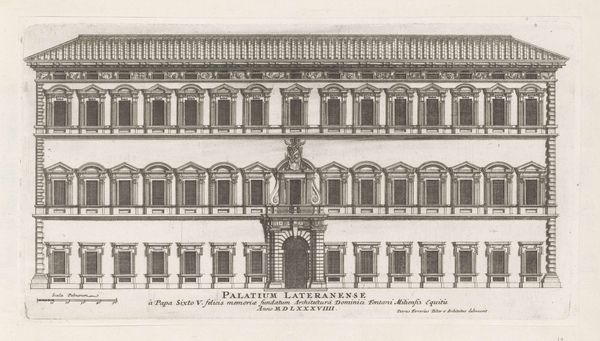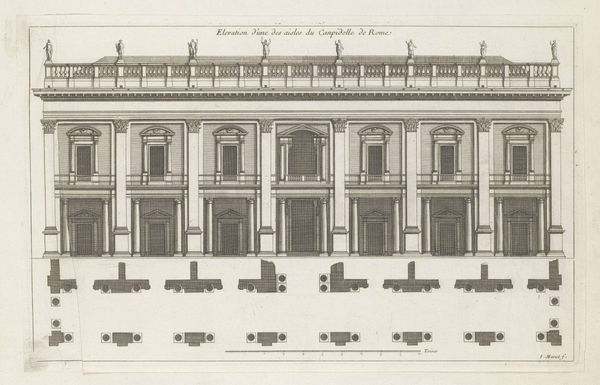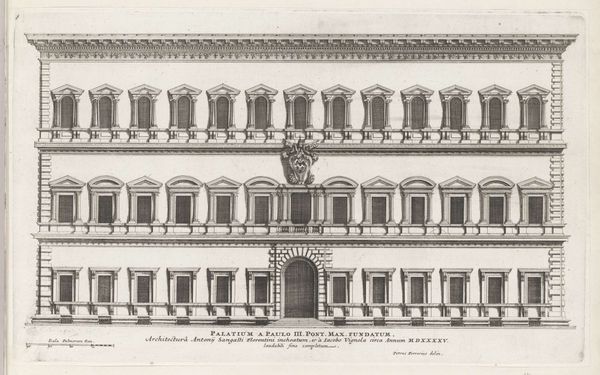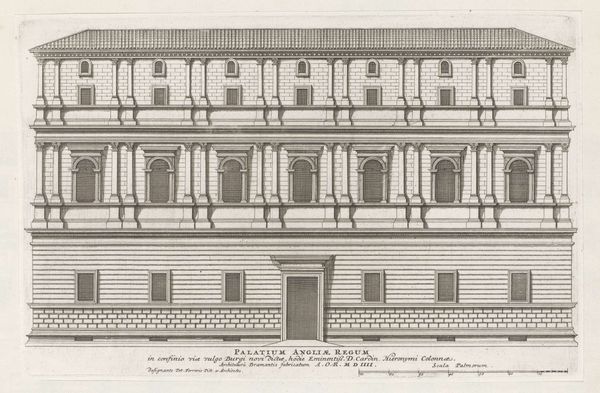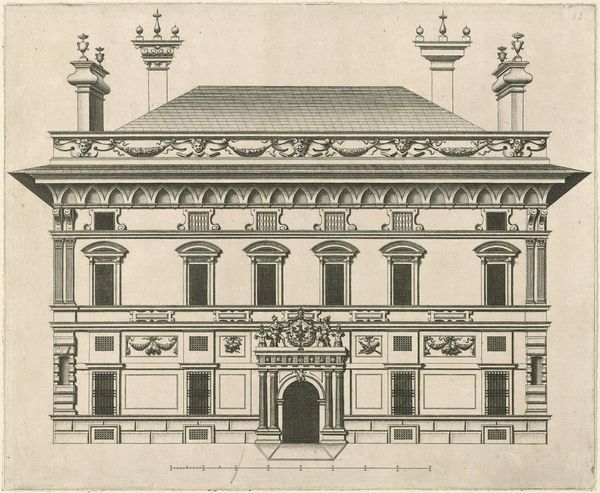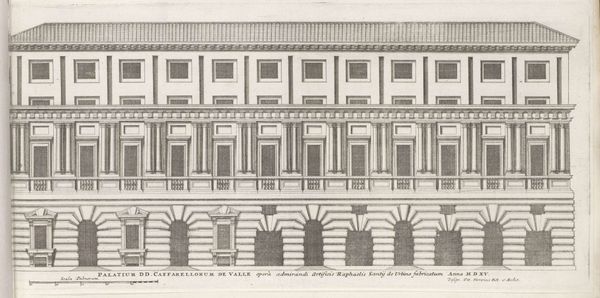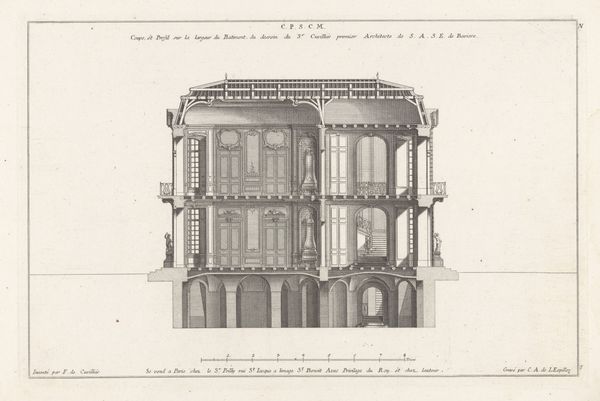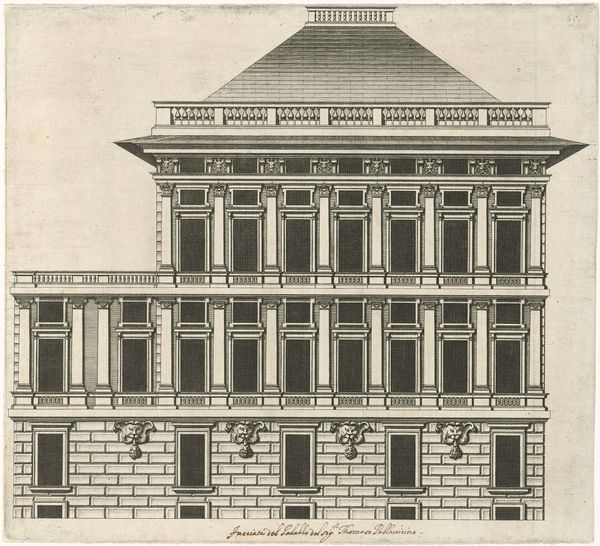
drawing, print, metal, etching, engraving, architecture
#
drawing
#
baroque
# print
#
metal
#
etching
#
line
#
cityscape
#
engraving
#
architecture
Dimensions: height 230 mm, width 384 mm
Copyright: Rijks Museum: Open Domain
Editor: This is Giovanni Battista Falda's "Façade van Palazzo Madama te Rome," from 1655. It's an etching, so printed in ink on paper, depicting the facade of a grand building. The symmetry is striking but also a little...oppressive? How do you interpret this work? Curator: The symmetry speaks volumes about power and control, especially considering the Baroque era's focus on grandeur and authority. Look closer – who benefits from this controlled, idealized image of Rome? And who is excluded from it? Editor: I hadn’t thought of it that way. It seemed so…orderly. Are you suggesting this image serves a specific ideological purpose? Curator: Precisely. Prints like this weren't just architectural records; they were instruments of power. They shaped perceptions of Rome, projecting an image of stability and imperial might. What is left out of this vision? What stories are not being told by this perfectly proportioned facade? Editor: So it’s like…propaganda, in a way? Making Rome look more powerful than it maybe was? And because it’s a print, it's easily disseminated. Curator: Absolutely. And think about who commissioned these images, who circulated them, and who consumed them. It's about constructing and maintaining a certain social and political order. What does the perfect geometry obscure? Is there room for dissent or individuality in such a rigid structure? Editor: I see it so differently now! The Palazzo Madama feels less like a beautiful building and more like a statement of dominance. All that symmetry is about excluding anything that doesn't fit the mold. Curator: Exactly! Seeing art through the lens of power helps us uncover hidden narratives and challenge dominant perspectives. Editor: Thanks. It’s made me realize how much context influences my perception of an artwork. Curator: And remember, context is never fixed – we are constantly reinterpreting these images from our own situated perspectives.
Comments
No comments
Be the first to comment and join the conversation on the ultimate creative platform.
